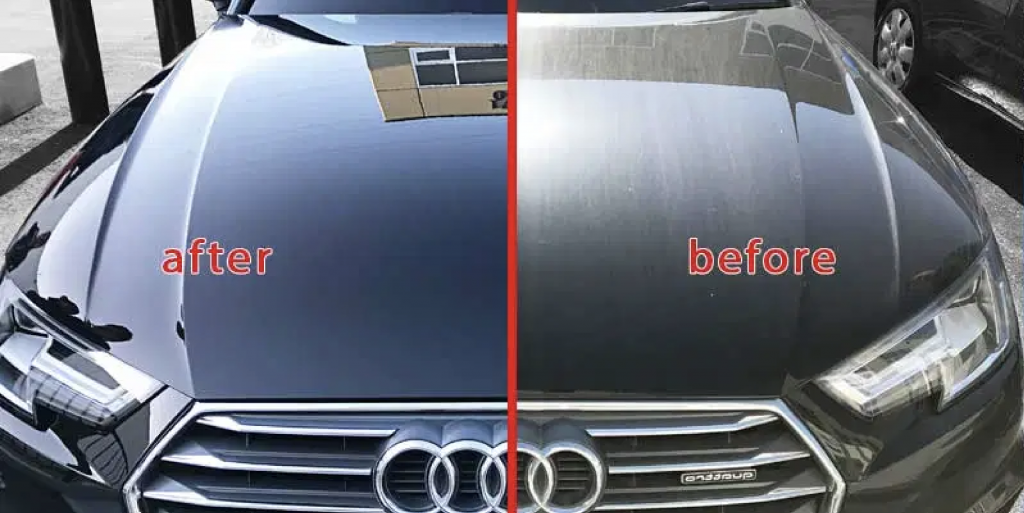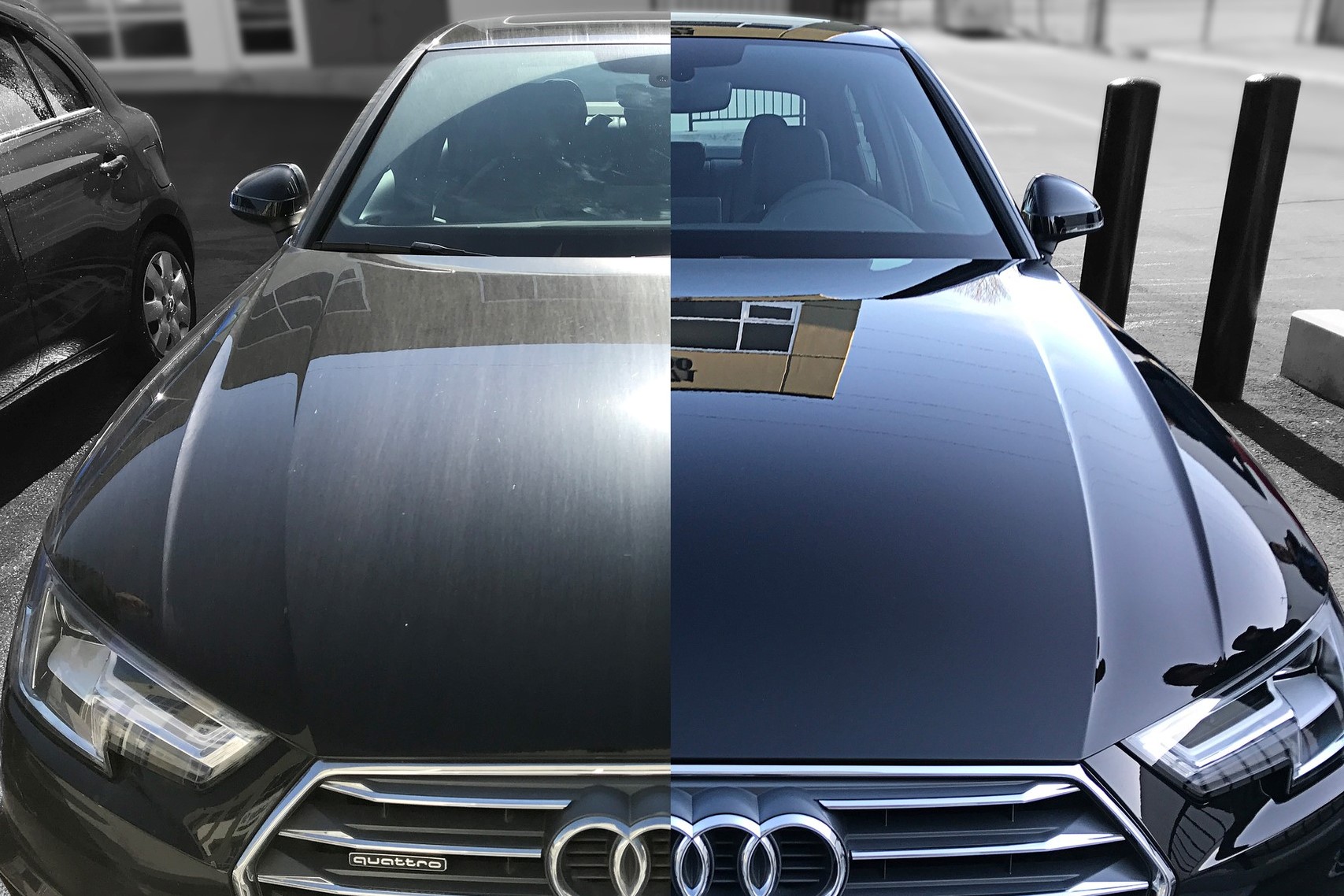Discover how ceramic coating beats old paint protection techniques.
Wiki Article
How Ceramic Layer Shields Your Automobile's Paint and Keeps It Looking New
Ceramic layer has actually emerged as a famous service for auto paint protection, supplying a robust protection against a range of ecological risks. By developing a semi-permanent bond with the car's surface area, it effectively seals tiny imperfections and supplies a guard against oxidation, dirt, and UV damages. This not just preserves the aesthetic charm of the vehicle yet additionally simplifies upkeep regimens. The complexities of exactly how this innovation operates and its benefits over traditional approaches warrant a closer evaluation, exposing compelling factors to consider this cutting-edge approach for your car.What Is Ceramic Coating?
Ceramic coating is regularly considered a revolutionary development in automobile paint protection. ceramic coating. This innovative item is a liquid polymer that chemically bonds with the car's factory paint, forming a safety layer that boosts toughness and visual charm. Unlike traditional wax or sealers, which give only momentary security, ceramic finishings provide long-lasting outcomes, usually extending a number of years with appropriate maintenanceThe key parts of ceramic layers are silicon dioxide (SiO2) and titanium dioxide (TiO2), which add to their hydrophobic properties. This hydrophobic nature permits water to bead and roll off the surface area, successfully avoiding contaminants like dust, grime, and bird droppings from sticking to the paint. Consequently, lorries treated with ceramic finishes require much less regular washing and are much easier to maintain.
Additionally, ceramic finishings give UV security, which aids avoid oxidation and fading of the paint as a result of sun direct exposure. This element not just maintains the cars and truck's aesthetic charm yet also adds to its resale worth with time. In general, ceramic layers represent a considerable jump forward in the world of auto care, using a robust option for lorry owners seeking to protect their financial investment.
Just How Ceramic Covering Works
Just how does the procedure of ceramic covering produce a powerful obstacle versus environmental risks? Ceramic finishing contains a fluid polymer that chemically bonds with the manufacturing facility paint of a vehicle. This bond forms a protective layer that is both hydrophobic and long lasting. The key part of ceramic coverings is silica dioxide (SiO ₂), which supplies premium solidity and strength against scratches, UV rays, and other outside pollutants.When used properly, the finish permeates the microscopic pores of the paint surface, creating a semi-permanent bond. This causes a smooth, shiny coating that boosts the automobile's aesthetic allure while all at once warding off water, dirt, and grime. The hydrophobic nature of the coating makes sure that pollutants glide off quickly, minimizing the frequency of cleaning and the possibility of scratches throughout cleansing.

Advantages of Ceramic Layer
The application of ceramic coating offers various advantages that substantially boost the defense and appearance of an automobile's paint. Among the key benefits is its capability to create a robust, hydrophobic layer that drives away water, dust, and various other pollutants. This residential property not only keeps the surface area cleaner you can find out more for longer durations yet likewise makes cleaning the lorry less complicated and much less labor-intensive.Furthermore, ceramic finishings offer exceptional protection versus unsafe UV rays, which can bring about oxidation and fading in time. ceramic coating. This UV resistance helps maintain the initial color and gloss of the car's paint, thereby preserving its visual charm for many years
Furthermore, ceramic coverings are chemically resistant, supplying security against acidic impurities such as bird droppings, tree sap, and roadway gunk. This resistance helps protect against etching and discoloration, which can jeopardize the stability of the paint.
Lastly, the durability of ceramic layers prolongs beyond standard waxes and sealants, usually enduring several years with correct upkeep. This lasting protection eventually translates into price savings, as lorry owners can lower the frequency of reapplication and maintenance efforts. On the whole, ceramic finishes stand for a substantial investment in car treatment.
Comparing Ceramic Finish to Traditional Approaches
Often forgotten in the quest for ideal vehicle security, the contrast between ceramic finish and traditional techniques such as shaving and sealers discloses considerable distinctions in sturdiness, efficiency, and maintenance. Conventional waxes commonly offer a short-lived protective layer, frequently lasting just a couple of weeks to a couple of months, while sealants can prolong this period to several months. In comparison, ceramic layers provide a durable, lasting guard that can sustain for several years when appropriately used.In regards to efficiency, ceramic coverings show superior hydrophobic residential or commercial properties, successfully driving away water and contaminants, which avoids dirt and gunk from adhering to the surface. This residential or commercial property not only enhances the car's appearance yet additionally streamlines the cleansing procedure. Typical waxes and sealers, while they might supply some water resistance, do not match the degree of protection offered by ceramic finishes.
The upkeep routine for both options splits substantially. While traditional approaches need frequent reapplication and upkeep, ceramic coverings are developed to stand up to home the rigors of daily driving with marginal treatment, making them a much more effective choice for vehicle fanatics looking for long-term defense. Eventually, the option in between ceramic layer and typical methods hinges on the wanted level of protection and upkeep commitment.
Upkeep Tips for Ceramic Coated Cars
Keeping a ceramic covered car calls for a strategic technique to ensure the durability of the safety layer. Routine cleaning is vital. Use a pH-neutral shampoo and microfiber clean mitts to stop scraping the covering while successfully removing dust and pollutants. Purpose to wash your automobile every two weeks, or a lot more regularly in severe problems.Furthermore, stay clear of automatic automobile cleans that utilize brushes, as these can compromise the stability of the ceramic finish. Rather, opt for a touchless clean or a hand laundry. After cleaning, drying is essential; use a top notch microfiber towel to prevent water places.
Applying a ceramic-specific maintenance spray can enhance the finishing's hydrophobic residential or commercial properties and add an check it out additional layer of defense. This need to be done occasionally, relying on your driving conditions.

Final Thought
In final thought, ceramic covering acts as a reliable safety step for automotive paint, supplying a long lasting barrier versus environmental damage and boosting the car's aesthetic charm. Its distinct residential or commercial properties, consisting of hydrophobicity and UV security, contribute to durable luster and cleanliness. Contrasted to conventional approaches, ceramic finishes present premium performance and longevity, eventually decreasing upkeep efforts. Adopting ceramic layer innovation can considerably expand the life expectancy of a lorry's exterior, guaranteeing it continues to be visually enticing and well-protected.Report this wiki page